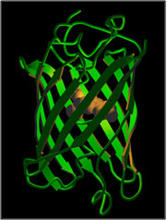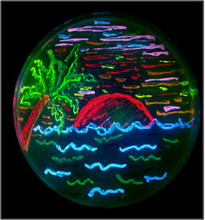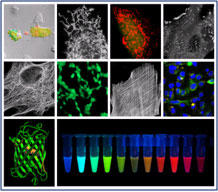To circumvent the limited spatial resolution of fluorescent protein imaging, we are developing genetically encoded tags for electron microscopy (EM). New flavoproteins photo-generate singlet oxygen molecules, enabling genetically-encoded, correlative, light and electron microscopy. For clinical applications, we need synthetic molecules with novel amplifying mechanisms for homing to diseased tissues. Synthetic peptides provide an amplifying mechanism for targeting fluorophores, MRI contrast agents, and drugs to sites of protease activity (e.g. tumors) in vivo. Separately, we have developed fluorescent peptides that light up peripheral nerves to show surgeons where not to cut.
 Rendered GFP |
 Agar Plate of Flurorescent Bacteria Colonies |
 Composite of Fluorescent Cells |
For more information, contact Kum Ham at 301-975-4203.
Colloquia are videotaped and available in the NIST Research Library.
Roger Y. Tsien
2008 Nobel Laureate in Chemistry
University of California (San Diego)

